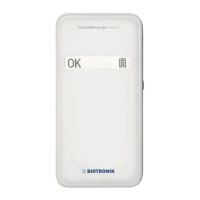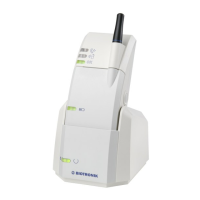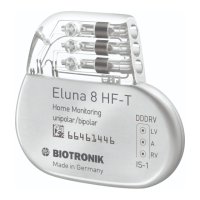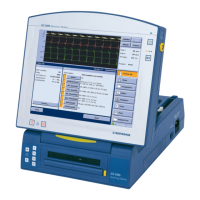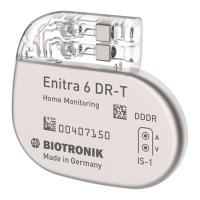Do you have a question about the BIOTRONIK CardioMessenger and is the answer not in the manual?
Explains the BIOTRONIK Home Monitoring function and its purpose.
Identifies the intended users of the Cardio Messenger manual.
Explains symbols like Note, Caution, and Warning used in the manual.
Lists the items included in the Cardio Messenger set and accessories.
Provides essential safety guidelines for using the Cardio Messenger.
Advises on safe placement and protecting the device from environmental factors.
Details environmental limits, antenna care, and proper handling of the device.
Provides guidance on proper disposal and data port safety.
Advises on potential interactions with EAS systems and how to behave around them.
Details steps and considerations before operating and optimal placement of the Cardio Messenger.
Explains how to connect the Cardio Messenger to the power supply and charging station.
Describes the meaning of the different lights on the Cardio Messenger.
Details the specific meanings of the yellow and green "traffic light" indicators.
Explains the different states of the battery monitor light.
Provides step-by-step instructions for powering on the Cardio Messenger.
Explains how to safely switch off the Cardio Messenger.
Details the process of charging the Cardio Messenger and interpreting charging status lights.
Explains low battery indication and how to know when data is being transmitted.
Introduces the troubleshooting section for common issues.
Explains troubleshooting steps related to the "traffic light" indicators.
Provides instructions on how to reset the device using the reset button.
Indicates when the Cardio Messenger might be defective and advises consulting a physician.
Explains when the implant automatically sends data or can be triggered.
Warns ICD patients against using magnets due to interference risks.
Provides guidelines for keeping the device clean, protected, and for pre-use inspection.
Discusses battery life, charging cycles, and when to seek battery replacement.
Describes various ways to wear the Cardio Messenger and use its clip.
Addresses consequences of not recharging and impact of device failure on the implant.
Clarifies if the Cardio Messenger can be taken during daily activities like shopping or sports.
Discusses ways to carry the device, including belt, bag, or backpack.
Provides advice on traveling with the Cardio Messenger, including voltage and network requirements.
Defines terms like Cardio Report, GSM, Home Monitoring, BIOTRONIK Service Center, and SMS.
Explains the FCC authorization for the transmitter and MICS service.
States the FCC ID and that the device conforms to government standards.
Discusses the phone's compliance with FCC RF exposure guidelines for body-worn operation.
Explains the RF assignment and potential interference issues.
Mentions the device's evaluation by an independent authority and its approval mark.
Explains the device's protection from electromagnetic interference and emissions.
Outlines warranty terms related to improper use, storage, or transport.
Provides general technical specifications like class of protection and operating mode.
Lists environmental parameters for operation, storage, and shipping.
Details dimensions, weight, charging voltage, and frequency of the remote unit.
Lists dimensions, weight, input/output voltage of the charging station.
Details the battery model, dimensions, voltage, charge current, and capacity.
Provides model, dimensions, cable length, and connector type for the power supply.
Details the Cardio Messenger's suitability for operation in specific electromagnetic environments.
Lists conformance levels and guidelines for emitted interference.
Details the device's susceptibility to conducted and radiated RF interference.
Provides guidelines for safe distances from portable/mobile radio devices.
Covers susceptibility to static discharge, transient disturbances, power surges, and voltage fluctuations.
Specifies requirements for magnetic field strength at supply frequencies.
Provides calculated safe distances for electromagnetic interference based on transmitter output power.
| Category | Medical Equipment |
|---|---|
| Device | CardioMessenger |
| Manufacturer | BIOTRONIK |
| Compatibility | BIOTRONIK implantable cardiac devices |
| Power Source | Rechargeable battery |
| Power Supply | AC adapter |
| Portability | Portable |
| Function | Remote monitoring of cardiac devices |
| Connectivity | Cellular network |
